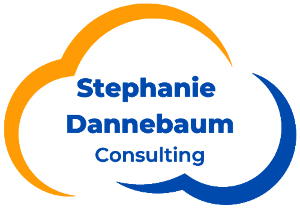One of the most well-known compliance documents for Registered Investment Advisory firms is the Form ADV Part 1 and 2. It must be amended at least once a year and/or within 30 days of a material change. Customer Relationship Management (CRM) Software is ideally situated to track and manage compliance procedures and documentation.
Why You Should Use Your CRM for Compliance Procedures Documentation
Registered Investment Advisory firms must document compliance requirements on a yearly or quarterly task, depending on the requirement. When a Registered Investment Advisory firm creates their compliance program, whether monitored internally or externally, there are four steps usually followed.
Step 1 – Create compliance procedures into a formal manual
Step 2 – Review compliance procedures to confirm they address all firm requirements
Step 3 – Implement compliance procedures into a task system
Step 4 – Update compliance procedures when changes occur
Implementation of compliance procedures into a task system such as a Customer Relationship Management system helps firms achieve successful audits due to the reporting and documentation capabilities.
How to Implement Compliance Procedures into CRM
When documenting compliance requirements into a Customer Relationship Management (CRM) software such as Redtail CRM or Wealthbox CRM, there are three ways to implement compliance procedures.
1. Note Templates
Note templates provide consistency and save time. For example, if you are a Wealthbox CRM user, you can use a tag called “Compliance” or more specifically “Form ADV Part 2” when building a note template that includes the date sent.
2. Compliance Sections
Wealth management CRM companies have included a compliance section as part of the system. In Redtail CRM, compliance documentation such as Lastest ADV Offering and IMA Date are fields under the “Know Your Client” section of a contact record.
3. Custom Fields or User Defined Fields
In Wealthbox CRM they are called Custom Fields. In Redtail CRM they are called User Defined Fields. These are unique fields created by the user to fulfill any datapoint. This feature can be useful if you want to customize the exact compliance requirement you wish to report on.
How to Track Compliance Information for an Audit
The first step in tracking compliance information for an audit is to find out what an auditor needs. This usually includes client lists, accounts, and dates. Developing consistent uniform processes to obtain this information is key. Some ideas to track these items include file naming conventions, documented fee calculations, and tagging complaints, money movements, trade requests, and new account openings in your CRM.
How to Use CRM Reports for Compliance Items
The best way to track compliance information for an audit is through reporting. The reporting capabilities of all Wealth Management CRM software allows a user to craft the exact information they are wanting to collect. In Wealthbox CRM, the reporting capabilities are very customizable. Simply create a report in the reporting section of the software to include the type of client and type of information you are wishing to report.
Creating the report is only part of the process. The most time intensive yet critical aspect is for the firm to properly document compliance requirements throughout the year. Building into your workflows and processes to document this information will make you more efficient.
CRM + Compliance Webinar Recording
Check out part one and part two of the webinar series here:
CRM Best Practices and Compliance Procedures – Part 1 (Form CRS)
CRM Best Practices and Compliance Procedures – Part 2 (Form ADV)




